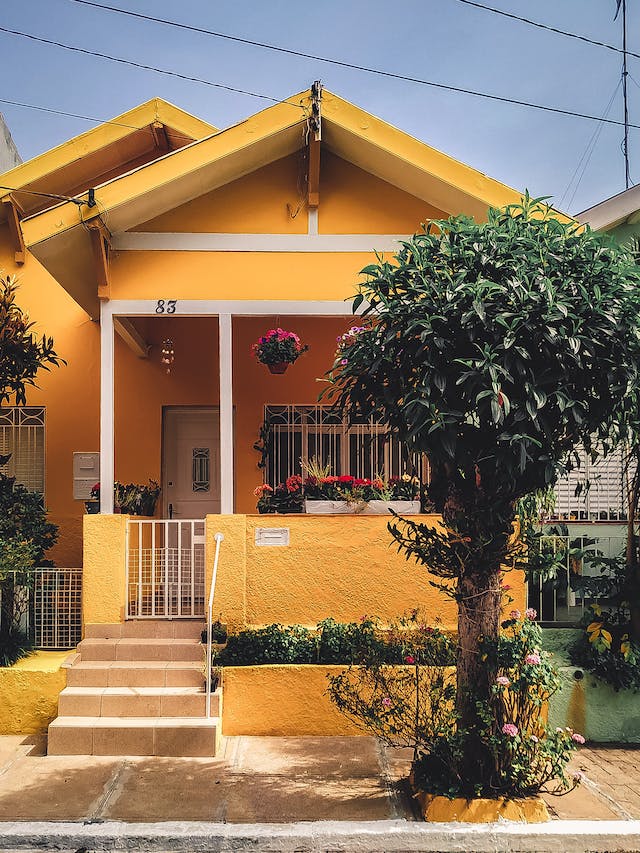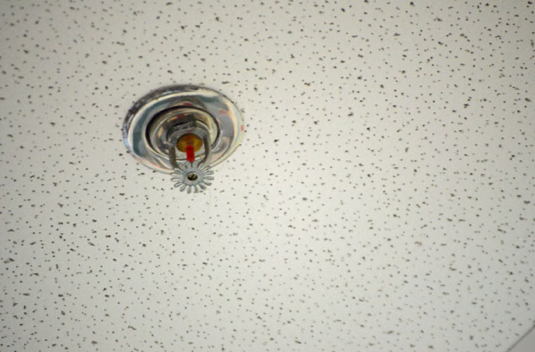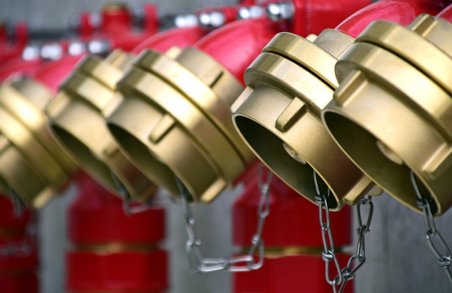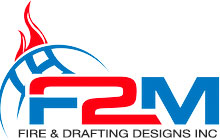Residential
Designing a Custom Fire Sprinkler System for Your Residential Property
 In this blog post, we will explore the process of designing a custom fire sprinkler system for your residential property. When it comes to protecting your home and family from fires, a fire sprinkler system is one of the most effective tools you can have. While many people think of fire sprinkler systems as only being for commercial properties, they can also be installed in residential properties.
In this blog post, we will explore the process of designing a custom fire sprinkler system for your residential property. When it comes to protecting your home and family from fires, a fire sprinkler system is one of the most effective tools you can have. While many people think of fire sprinkler systems as only being for commercial properties, they can also be installed in residential properties.
Assess Your Property’s Unique Needs
Every residential property is unique, and the fire sprinkler system should reflect those unique needs. Take the time to assess your property’s layout, size, and potential fire hazards to determine the type of fire sprinkler system that will best suit your needs. Consider factors such as the number of rooms in your home, the types of materials being used in your home, and the potential sources of ignition.
Work with Experienced Professionals
Designing and installing a fire sprinkler system requires specialized knowledge and expertise. Work with experienced professionals who understand the unique needs of residential properties and can design a system that meets those needs. Experienced professionals can also help ensure that your fire sprinkler system meets all relevant codes and regulations.
Choose the Right Type of Fire Sprinkler System
There are several types of fire sprinkler systems that can be installed in residential properties, including wet pipe systems, dry pipe systems, and pre-action systems. Each type of system has its own unique advantages and disadvantages. Work with your fire sprinkler system designer to determine which type of system is right for your residential property.
Proper Placement of Sprinkler Heads
Proper placement of fire sprinkler heads is crucial for ensuring maximum effectiveness. Work with your fire sprinkler system designer to ensure that sprinkler heads are placed in the right locations to provide maximum coverage. Consider factors such as the size and layout of your home and the potential sources of ignition when determining sprinkler head placement.
Regular Maintenance and Testing
Regular maintenance and testing are crucial for ensuring that your fire sprinkler system is working properly. Make sure to schedule regular maintenance and testing to identify any issues and ensure that your system is in top working order. Regular maintenance and testing can also help ensure that your system meets all relevant codes and regulations.
Contact F2M Fire and Drafting Designs for Fire Sprinkler System for Residential Property
If you’re in need of a custom fire sprinkler system for your residential property, contact F2M Fire and Drafting Designs. Our team of experts has the experience and knowledge to design and install a system that meets your specific needs. We stay up to date with the latest technologies and regulations to ensure that your fire sprinkler system is up to code and functioning properly.
Contact us today to learn more about our fire protection system design services.
F2M Fire & Drafting Designs Inc.
31 South Street, Suite 3S-4
Mount Vernon, NY 10550
(718) 928-3009
info@f2mfadds.com
Residential Fire Sprinkler Design

Residential fire sprinkler system design is usually not the same for any two buildings. This means there are many factors that fire sprinkler designers take into account. Whether it is a small humble abode or a high-end penthouse for which you want a fire sprinkler system, there will be certain design processes that will take place.
While the whole fire sprinkler design process comes under the specialty sprinkler designers and engineers, you can learn the basics by reading this article. From ceiling-mounted sprinkler headlines to wall-mounted smoke detectors, there are many things in the design process.
Residential Fire Sprinkler Design Process
Fire sprinkler and protection designing and installation companies take commercial fire safety as a critical job. Hence, they invest maximum time and effort to take effective measures that serve the purpose entirely. Let’s look at some of the basics, leaving the many complicated terms, terminologies, processes, and sequences.
Water Supplies
The NFPA standards are the foundation that set the processes, including planning, designing, construction, and installation of fire sprinkler systems for commercial buildings. Water supply is the major factor without which there can’t be a fire sprinkler system or an active fire protection system.
The NFPA 13D standard states that the flow of water supply for an active fire sprinkler should be 13 gallons per minute along with a pressure of 7 psi. Learning what kind of water supply is available for the fire sprinkler system makes planning easier. For instance, with large underground supply lines, it will be easier and cost-effective to build smaller and a few sprinkler lines.
What components does water supply planning involve?
- Water Meters help in determining the flow, pressure, and usage of water through the supply lines and in the sprinkler pipes
- Pressure-Reducing Valves help in keeping the pressure at a minimum according to the fixture ratings
- Elevation of the water supply pipelines and sprinkler pipelines can reduce the pressure significantly
- Meter Setters are not advisable to use since they restrict the overall water flow
Fire sprinkler design professionals can make the proper assessments; hence their involvement is of paramount importance.
Builder and Design Techniques
There are many ways to determine whether there are too many or few sprinklers in residential space. Builders possess the right set of skills and techniques that help ensure that a residence has the right amount of sprinkler heads in place. The NFPA 13D codes allow for sprinkler head omissions in certain home areas.
Moreover, the design process involves keeping the pressure requirements stable with the available budget. Hence, the number of sprinklers and pipes remains pre-determined. Besides that, there are material costs for the types of pipes, fittings, and sprinklers your designer chooses for your residence.
Piping Configuration
Piping configurations are extremely important in determining the efficiency and effectiveness of an active fire sprinkler system. Since without a proper pipeline and system planning, there can’t be sufficient water supply through the sprinkler heads, your fire system designer will pay close attention to it. Two common types of configurations include:
- Tree Configuration
- Looping Configuration
System Type
There are commonly two main types of fire sprinkler systems in use for residential and commercial buildings alike.
- Multipurpose System
This connection works well with the loop configuration as it involves a small number of connections and fittings. A multipurpose fire sprinkler system can integrate into residential plumbing. This way, it doesn’t involve any hassles, and sprinklers appear to be additional fixtures.
- Standalone System
The standalone system usually features a tree configuration. It involves multiple test and drain connections, along with a backflow prevention device.
Fire Department Codes and Requirements

Codes and requirements are important to follow at every stage and phase of the fire sprinkler designing process. Strict guidelines and codes from the mandatory federal authorities make it imperative to comply. This ensures that all fire protection systems are up to date and above minimum security standards.
Finalization of the Design Process
Once all the complicated processes and design phases finish, a final concept in the form of a drawing appears. This drawing concept will involve using some of the most common engineering, 3D print, and diagram software. AutoCAD is common software that designers use to put the set plan into visuals. In the end, when the practical assessments are complete over the AutoCAD finish, the installation may take place.
Residential Fire Sprinkler Design: Conclusion
Do you want your residential fire sprinkler system to be extremely effective and foolproof? Surely, you cannot rely on an inexperienced fire designing and installation company. At F2M Fire & Drafting Designs Inc., we ensure that our expert builders, designers, and installation personnel conform to the industry standards and meet your requirements and needs.
Fire protection is critical to the safety of the residents. Therefore, you should only choose the best business in the industry. Our experience, skills, competence, and reliability in delivering fire sprinkler system design services are unmatched. Visit our official website for more information and contact us at (718) 928-3009.
F2M Fire & Drafting Designs Inc.
1231 Lafayette Ave, Fl 2
Bronx, New York, 10474
✆ (718) 928-3009
Email: info@f2mfadds.com
Reference Links:
https://www.awwa.org/Portals/0/AWWA/ETS/Resources/ResidentialFireSprinklerSystems.pdf
https://www.pmengineer.com/articles/94816-the-requirements-and-challenges-of-residential-fire-sprinkler-systems-and-water-meters
https://www.fresnocountyfire.org/wp-content/uploads/2017/04/residential_fire_sprinkler_systems_handout.pdf
https://www.stwater.co.uk/content/dam/stw/stw_buildinganddeveloping/domestic-and-residential-fire-sprinklers-design-policy-and-guidance-final-v5.pdf
